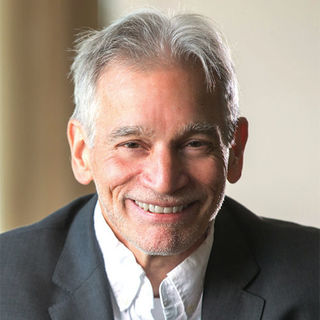Grow Your Own: Harnessing Muller Glia for Retinal Regeneration
Eye On the Cure Research News
There’s hope for retinal regeneration for humans, thanks to Foundation-funded researcher Dr. Thomas Reh, who is investigating how to derive new photoreceptors from retinal cells called Muller glia.

Dr. Thomas Reh
As I wind down the week at the annual meeting of the Association for Research in Vision and Ophthalmology (ARVO), I'd like to introduce an intriguing therapeutic approach to retinal degeneration that would be a home run if perfected. It's called retinal regeneration, and it happens to be right in line with the National Eye Institute's life-changing audacious goal, announced on Monday: "to regenerate the neurons and neural connections in the eye and visual system."
One reason that retinal degenerations are so devastating is that, once photoreceptors are lost, they don't grow back. As you may know, the Foundation is funding a number of promising projects to replace lost retinal cells with those derived from a number of sources, including a patient's own skin or blood.
But a potentially more elegant approach to overcoming retinal degenerative diseases would be to stimulate the patient's retina to regenerate its own photoreceptors. In some animals — namely, fish and amphibians — the retina can regenerate. Unfortunately, such is not the case in people — at least not yet.
But there's hope for retinal regeneration for humans, thanks to Foundation-funded researcher Dr. Thomas Reh, who has reported progress on this treatment approach at a couple of ARVO sessions. Dr. Reh is investigating how to derive new photoreceptors from retinal cells called Muller glia. In the developed retina, Muller glia provide architectural support and a number of protective and waste-disposal functions.
But Dr. Reh has shown that Muller glia can be reprogrammed in a dish to become neurons — cells that are closely related to photoreceptors. Much more work remains, but if he can derive photoreceptors from Muller glia in a mammal such as a mouse, it would be a major step toward making retinal regeneration possible in humans.
A key benefit of a regenerative treatment is that researchers don't have to worry about getting transplanted cells to functionally integrate with the patient's exiting retina. That's a big hurdle at the moment. Regeneration would also eliminate the concern of potential immune reactions that might come from newly introduced photoreceptors.
At this stage of the game, retinal regeneration is definitely an audacious goal; unlike stem cell therapies now in clinical trials, regeneration is several years away from becoming a reality. But we have to keep thinking big. Just 15 years ago, we had no idea that we could even grow new retinal tissue from stem cells. But we have come a long way since then.
Finally, please keep in mind that the ARVO meeting is just a snapshot of where the research is today. We are making new advancements all the time, and our progress is accelerating like never before. Is it fast enough? Absolutely not. But we have the audacity to keep urgently driving the research until everyone can see.




